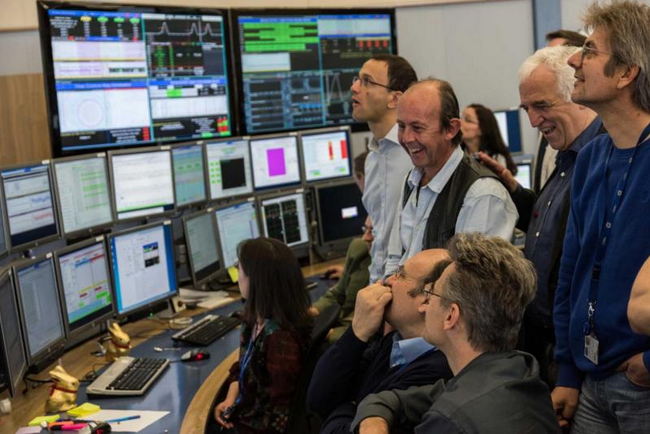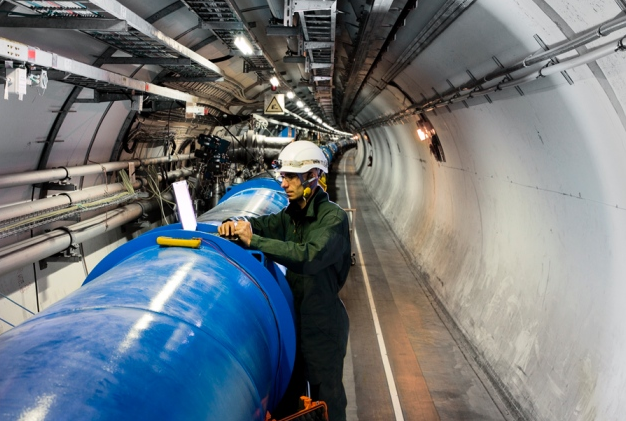LHC restarts after two years
The world’s largest particle accelerator was turned on in April and is expected to start collecting data in June

LHC operators confirm the first circulation of beams in the accelerator after two years (Image: Maximilien Brice/CERN)
The Large Hadron Collider (LHC), the largest particle accelerator in the world, was turned on again this month after a two-year period of maintenance and upgrades. Although not yet ready to make collisions, on the 5th of April two proton beams circulated in the equipment with relative low energy. Data collection is expected to homework writing begin in June, with an energy of 13 TeV – which would increase the LHC’s own record of 8 TeV.
Among the main objectives of the researchers for this second run is to further study the Higgs Boson and to discover new particles that are not predicted by the Standard Model.
Higgs Boson
In the first run of the accelerator the Higgs boson was discovered – it was the last particle of the Standard Model that had not been detected yet. Its mass was calculated with good precision: 125 GeV with an error of 0.21 for more or less. However, there is still much to learn about this particle.
“The LHC will try to make more precise measurements of the Higgs Boson properties look here http://samedayessays.org/buy-essay/and how it interacts with other particles,” says Gero von Gersdorff, postdoctoral at ICTP-SAIFR. “The way it decays, for example, can provide more information. Furthermore, a great problem in particle physics is why the mass of the Higgs is so small. Many physicists expect that this should be explained by a theory beyond the Standard Model”.
Beyond the Standard Model
With the Standard Model complete, any new particle that is discovered will require an extension of the model. Among the most studied theories that propose such extensions are Supersymmetry and the Composite Higgs models. In Supersymmetry, all Standard Model particles have a partner particle with the same physical properties, but with different spin. In Composite Higgs models, the Higgs Boson is not a fundamental particle, that is, it consists of other sub-particles. With higher energies, the LHC will be able to detect particles with larger masses and provide the first experimental evidence for these theories.
“The supersymmetric particles that are theoretically easier to detect are the squarks and gluinos, supersymmetric partners of quarks and gluons, respectively,” says Alberto Tonero, postdoctoral at ICTP-SAIFR. “In fact, the detection of these particles was expected in the first LHC run. That means that in the current model the supersymmetry wouldn’t be exact for paper editing writing, as the particles that we are looking for would have a bigger mass. If they are detected now and their supersymmetric nature is confirmed, although it will not prove Supersymmetry, it will be a strong evidence that it is correct.”
The second phase of LHC experiments will be held until 2018, when the accelerator will be turned off again. A third phase is already confirmed and should start in 2020 or 2021.
